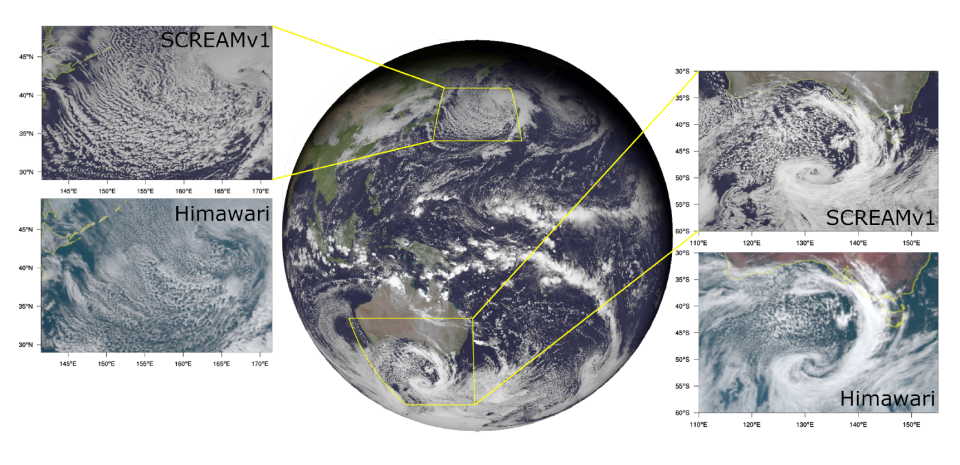Inaugural Gordon Bell Prize for Climate Modeling Awarded to Multi-Institutional National Laboratory Team
A 19-person team with members from a number of Department of Energy national laboratories, including PNNL, receive top prize in advanced scientific computing

The Gordon Bell Prize for Climate Modeling recognizes outstanding impact in climate modeling and related fields. A multi-institutional team was awarded the inaugural prize in 2023 for their work on more accurately modeling deep convective clouds, including cumulonimbus clouds like those shown here.
(Photo by Sid Dalal | Pexels.com)
The inaugural Association for Computing Machinery Gordon Bell Prize for Climate Modeling was awarded to a team of 19 researchers, almost all of whom are based at Department of Energy national laboratories, including Pacific Northwest National Laboratory (PNNL).
Starting in 2023, the Gordon Bell Prize for Climate Modeling will be awarded annually for 10 years for outstanding contributions by climate scientists and software engineers. Awardees are selected based on the impact or potential impact they have on climate modeling and related fields, as well as on broader society, by using high-performance computing in climate modeling applications to address the global climate crisis.
The Association for Computing Machinery is the world’s largest educational and scientific computing society, advancing computing, providing resources, inspiring dialog, and tackling challenges. ACM’s ~100,000 members have access to extensive career and professional development opportunities, including a vast international membership.
Exploring deep convection with SCREAM
The 2023 Gordon Bell Prize for Climate Modeling awardees were recognized for their project: The Simple Cloud-Resolving E3SM Atmosphere Model Running on the Frontier Exascale System. The model, SCREAM for short, allows scientists to simulate deep convective clouds more accurately. Deep convective clouds are vital to global climate, being the primary way to distribute the sun’s heat across the planet. Better understanding and modeling deep convection is key to addressing climate change, and SCREAM enables exascale computers to run accurate and efficient simulations of deep convective clouds.
Before SCREAM, a key limitation of climate models that resolve deep convective clouds was their high cost and relatively slow speed—most are only able to simulate a few days’ worth of weather per each actual day (referred to as a wallday, or the day represented by a wall clock). The generally accepted minimum capability a simulation needs to provide practical and useful weather and climate projections is one simulated year per wallday, far exceeding the capabilities of traditional models. SCREAM not only meets but exceeds this climate modeling grand challenge by achieving 1.26 simulated year per wallday, opening the doors to a vast and rich field of climate research.

Going beyond the clouds
L. Ruby Leung, a Battelle Fellow and the PNNL member of the 19-person team, is the chief scientist of the Energy Exascale Earth System Model (E3SM), the model SCREAM is built on. E3SM is “a state-of-the-science Earth system model development and simulation project to investigate energy-relevant science using code optimized for [the Department of Energy’s] advanced computers.” E3SM is the foundation for an array of model components and applications, including SCREAM.
The impact of SCREAM goes beyond improving cloud simulations. “Being able to accurately simulate weather and climate with Earth system models provides vital information for addressing climate change,” says Leung. “Receiving the Gordon Bell Prize for our work is a great honor, and it highlights the crucial role of computational science and technologies in advancing climate modeling.”
The entire team is as follows: Mark A. Taylor, Luca Bertagna, Conrad Clevenger, James G. Foucar, Oksana Guba, Benjamin R. Hillman, and Andrew G. Salinger (all from Sandia National Laboratories); Peter M. Caldwell, Aaron S. Donahue, Noel Keen, Christopher R. Terai, Renata B. McCoy, and David C. Bader (all from Lawrence Livermore National Laboratory); Jayesh Krishna and Danqing Wu (both from Argonne National Laboratory); Matthew R. Norman and Sarat Sreepathi (both from Oakridge National Laboratory); James B. White III (Hewlett Packard Enterprise); and L. Ruby Leung (PNNL).
Published: January 16, 2024